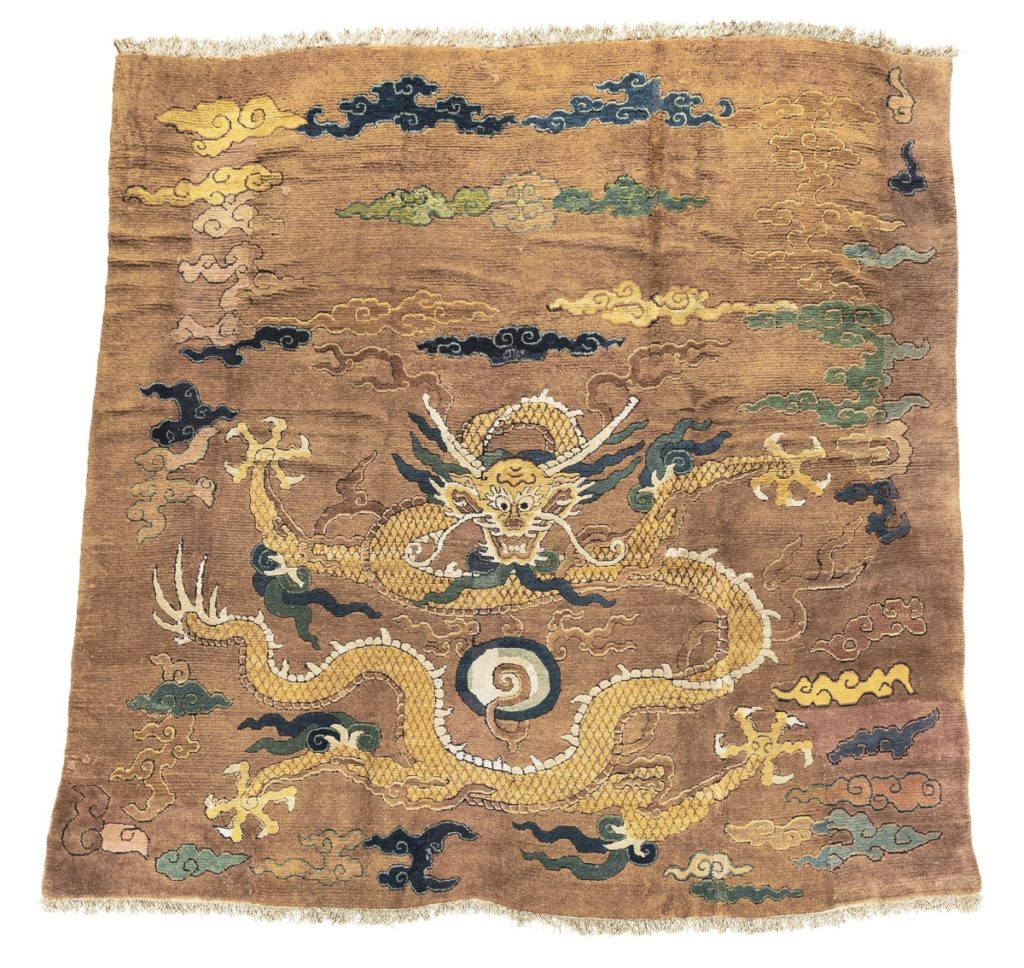
In April, Skinner announced that it had hired as the director of its rug and carpet department, Benjamin Mini, who is also serving as the Boston based firm’s regional director for Maine and Northern New England. We introduced ourselves to Mini and asked him to tell us, and our readers, a bit more about himself and to describe the path that has brought him to Skinner.
Welcome to Skinner! For those of our readers who don’t already know you, can you please tell us about the path that brought you here?
I’ve been involved in rugs for a long time, essentially my whole life. I first began as a collector, but quickly learned that I needed to sell rugs in order to afford new material that matched my evolving tastes. I was already buying and selling rugs by the time I was in college.
I started by “picking” rugs, keeping some for myself and then selling others to rug and antiques dealer and sometimes directly to collectors. I have always enjoyed the hunt for good rugs and textiles. Eventually, this pastime expanded, and it became a job for me – a job that I loved. Working in retail settings in carpet galleries over the years, I learned so much from just interacting directly with customers; to know what factors retail buyers value for instance – the condition of rugs and carpets was just one of many factors to be considered. It also helped me hone my aesthetic understanding of rugs from a variety of regions.
What happened next?
I eventually moved to a career in education where I taught history, art history and Islamic studies. I continued working as a rug buyer on the side, though, and my collection expanded as I increased my pool of connections to dealers and collectors throughout the world. Teaching about history and art history, especially, complemented my love of rugs and helped me to put antique rugs into a deeper perspective. With this background, I have always loved Skinner Auctioneers and appreciated that they have been a consistent and important player in the antique rug market, having held auctions of rugs and carpets for more than 40 years. Skinner auctions are exciting events for rug aficionados. Working for Skinner in its rug department seemed like a dream job to me, so when I heard they had an opening for a new rug specialist, I immediately sent them my resume and we soon set up an interview. Now I am working as their antique rug and carpet department director, part of a terrific team of directors and specialists (24 specialists in 14 departments) at Skinner. I feel very fortunate to work with an auction house that has such a hands-on approach and deep roots in the Northeastern region, as well as an international reach.

Ming Imperial dragon carpet, China, circa 1600,
11 feet 4 inches by 11 feet 11 inches. Photo courtesy Skinner.
What piqued your interest in rugs and carpets in the first place?
My interest began when I was quite young. My neighbor was a rug dealer, and I was intrigued by all the great carpets in his house. I started asking questions, and, pretty soon, I was hooked. The designs fascinated me. I loved the complex geometry of older Turkmen pieces and the more naturalistic motifs in antique Persian rugs. I was drawn to the sophisticated interplay of positive and negative space in the best carpets, and I spent many hours just staring at the balance, precision and playfulness in rug designs. I’ve always been struck by the artistic qualities of rugs, but also by how different they are from more purely aesthetic objects, such as paintings. Paintings are generally meant to be viewed on the wall, while rugs are meant to be viewed and used. This extra dimension – their usefulness – fascinated me, and, even today, I am attracted to woven objects with this dual nature of artistic vision and purposeful design: saddlebags, spoon bags, salt bags etc.
What are some of the most noteworthy pieces you’ve handled in your career, to date? What about Skinner’s previous auction successes in this field?
I’ve handled a lot of great rugs in my lifetime – early Turkmen pieces, Caucasian, Anatolian etc. However, I’ve never handled anything as rare or important as the Ming dynasty imperial dragon carpet from the Jim Dixon collection, which we just sold at Skinner, as part of a major series of auctions dedicated to Dixon’s collection. The first two auctions in this series just closed and were very successful. Many of the lots sold far above estimate and the total value of lots sold exceeded $1 million, including the prized Ming carpet, which sold for $324,500. This carpet is part of a very small group of rugs. There are perhaps only a dozen or so others that are known to exist today. It was woven for use by the Chinese emperor at the imperial palace in Beijing. We don’t know for sure which emperor, but it’s likely that it was woven for the Emperor Wanli, who invested in many new rugs and textiles for the imperial palace. The carpet also has many stylistic and artistic similarities to other rugs and textiles that were woven during the Wanli period. We can reasonably date the dragon rug from the Dixon collection to circa 1600, making it among the oldest carpets I’ve ever handled. These carpets are incredibly rare, though, I know that Skinner sold at least one other Ming imperial palace carpet in the 1980s, and, more recently, they sold an important fragment of an imperial palace carpet from the Ronnie Newman collection. Rug collectors and dealers know that Skinner, with its deep knowledge and global reach, is the ‘best auction house in the US for rare material such as this.’
-Madelia Hickman Ring




